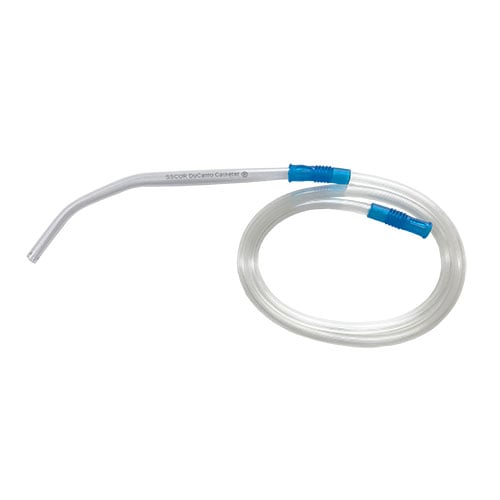
As an EMS provider, you know traumatic injury plays a central role in many emergencies. Trauma calls make up a large percentage of responses and take a tremendous toll on lives throughout our country. Here are a few stark statistics from the National Trauma Institute:
- Trauma is the #1 cause of death for Americans between the ages of one and 46
- Trauma is the #3 cause of death overall
- Each year, trauma accounts for 41 million ER visits and two million hospital admissions
- Trauma injury accounts for 30% of all life years lost
- The economic burden of trauma is more than $671 million annually
- Each year, more than 150,000 people lose their lives to trauma
The Effects of Trauma on the Respiratory System
Trauma to any part of the body can be life-threatening. It is especially so when it involves the respiratory system. Trauma can affect the patient’s ability to oxygenate effectively. They include:
- Hypoventilation resulting from the loss of ventilatory drive (via decreased neurologic function)
- Hypoventilation from obstruction of the upper or lower airways
- Hypoventilation from decreased expansion of the lungs
- Hypoxemia resulting from a decrease in diffusion of oxygen across the alveolar-capillary membrane
- Hypoxia from decreased blood flow to the alveoli
- Hypoxia that is caused by fluid or debris blocking the alveoli
- Hypoxia from decreased blood flow to the tissues
Trauma can profoundly affect the patient’s respiratory system. And when the trauma involves the face, the risk of airway compromise is even higher.
Facial Trauma and Respiration
Whenever you encounter facial trauma, you should maintain a high index of suspicion for airway compromise. Blunt or penetrating facial injuries can affect the patient’s airway in several ways. They include:
- Decreased level of consciousness
- Hemorrhage into oral/nasal cavities
- Broken teeth, which can lead to obstruction
- Loss of airway patency from facial fractures
- Crushing injuries that impede airflow
These injuries require immediate and aggressive intervention, either through effective suctioning, supplemental oxygen, assisted ventilations, airway adjuncts (OPA, NPA, supraglottic), an advanced airway, or a combination of these measures.
Begin with a quick assessment. In the conscious patient, this is effectively accomplished through simple questions. But if the patient is unconscious, or unable to respond, observe the following:
- Patient Positioning – If the patient is supine, they are at risk of an airway obstruction from the tongue, blood, or debris. Patients with facial trauma placed on backboards will need to be closely monitored; it may be necessary to tilt the board to allow drainage and enhance suctioning.
- Noise from the Upper Airway – Noise emanating from the upper airway is usually the result of a partial obstruction (tongue, edema, blood, foreign body), so take immediate action to prevent a complete obstruction.
- Look for Obstructions – Examine the oral cavity and remove any debris or foreign bodies.
- Assess Chest Rise – Increased work of breathing and use of accessory muscles usually indicate airway compromise. Be sure to gauge the equality of chest rise.
Controlling the Airway
In the case of facial trauma, you must aggressively control the airway. Airway management is your primary goal, so do not become sidetracked by gruesome injuries. Your ultimate objective is to secure the airway. This can be accomplished via:
- Manually Clearing the Airway – Perform a quick visual inspection of the oral cavity and remove any foreign material (broken teeth, food, debris). Sweep it out of the mouth using a gloved finger, or utilize your portable suction machine for removing blood and vomitus.
- Position the Airway – For trauma patients who cannot protect their airways, you must position them to prevent the tongue from falling back against the hypopharynx. Use either the jaw thrust or the chin lift in cases of suspected spinal injury.
- Suctioning – Effective suctioning is one of the primary methods of maintaining airway patency. Be sure to preoxygenate the patient and avoid prolonged suctioning to prevent hypoxia. Use an appropriate suction catheter, especially when removing blood and tissue. Your suction unit is of no use if the tip becomes clogged, so employ an evacuation tool when needed.
- Use an Airway Adjunct – If manual positioning is ineffective, use a basic adjunct to maintain patency in the unresponsive trauma patient. OPAs, NPAs, or supraglottic airways can effectively maintain the airway until an advanced airway can be placed.
Traumatic injuries can be complicated and life-threatening. And when they involve the face, they can pose an even greater risk to the patient’s airway. You must be vigilant and maintain a high index of suspicion in facial trauma. Your patient’s airway patency may depend on it.
Editor's Note: This blog was originally published in August, 2017. It has been re-published with additional up to date content.

















